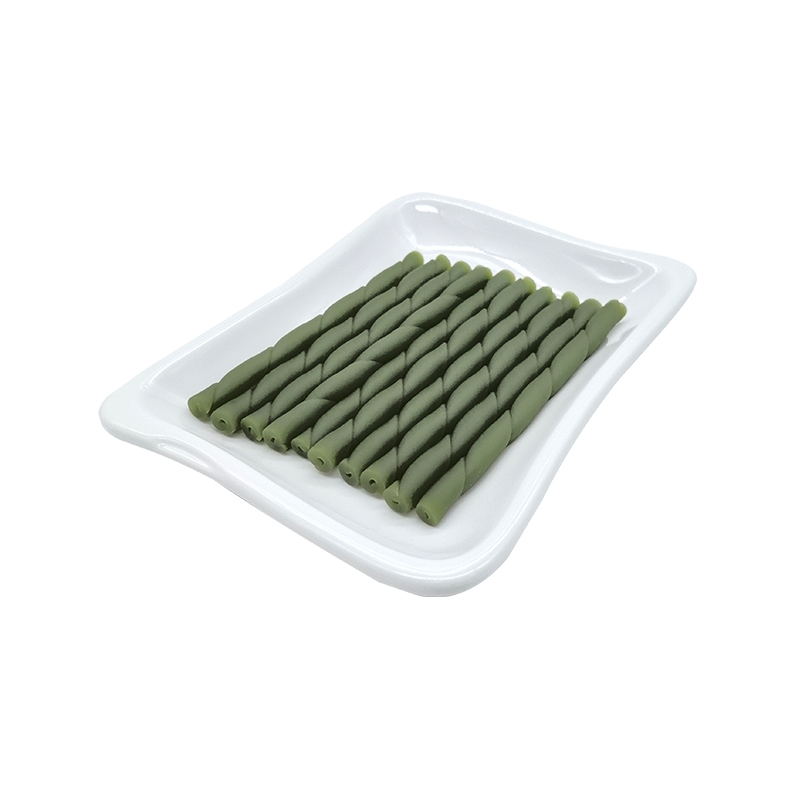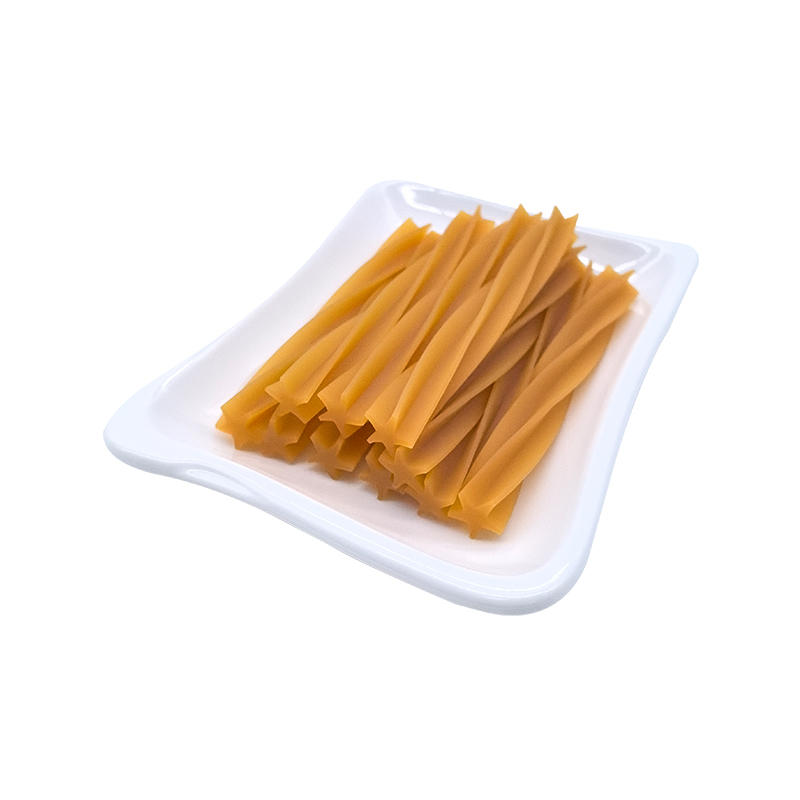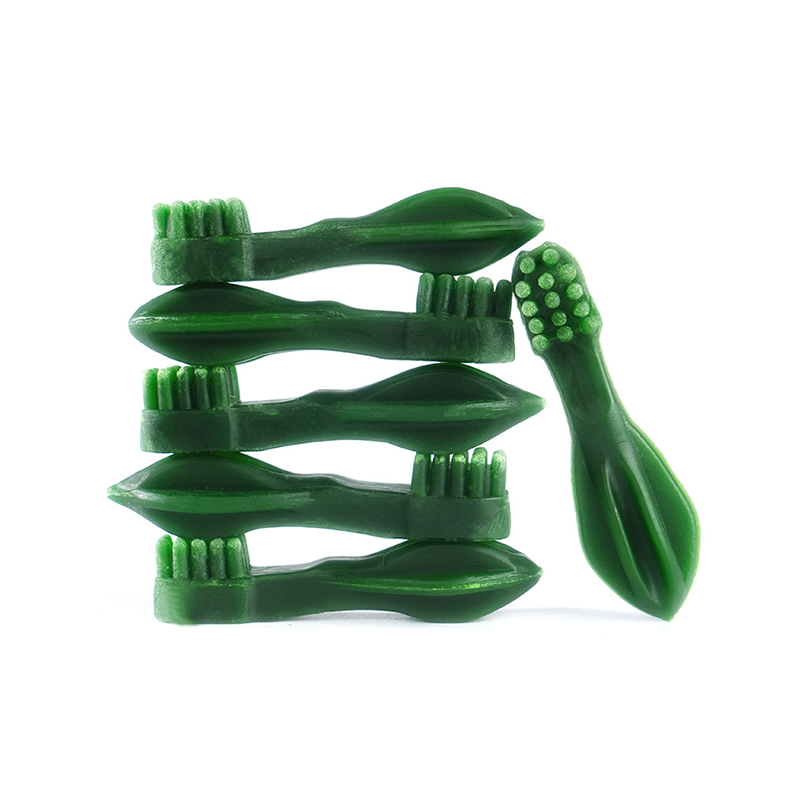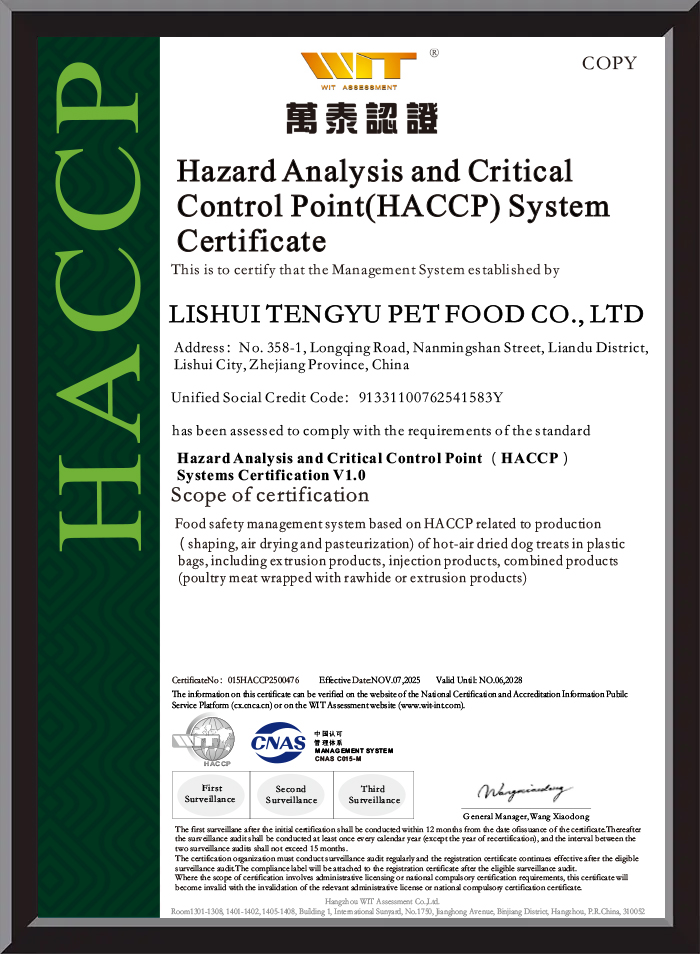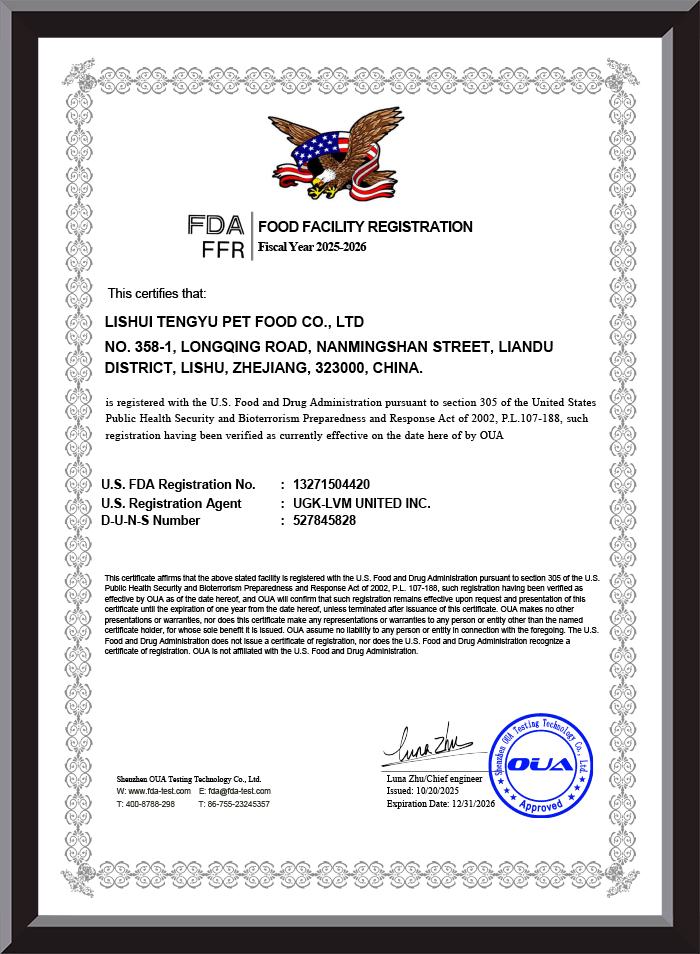Dry jerky treats and jerky chew strips have become a popular choice among dog owners seeking snacks that combine taste, nutrition, and long-lasting en...
Read MoreWelcome to Lishui Tengyu Tierfutter GmbH.
[email protected]

-
-
Providing dogs with treats that are both enjoyable and functional has become an essential part of modern pet care. Durable Dog Chewing Treats are desi...
Read More -
Meat-based dog treats are becoming increasingly popular among dog owners who want to provide snacks that are both tasty and nutritionally beneficial. ...
Read More -
Pet owners have shown increasing interest in natural and functional treats that support a dog’s overall health. Among these options, Natural Knotted B...
Read More
Dental chew sticks are a widely popular segment within the pet care industry, particularly in the canine market. Designed to support oral health, these treats combine chewing action with specialized formulations to help reduce plaque, tartar, and bad breath. Over the past decade, rising pet ownership and increased awareness of pet dental hygiene have positioned dental chew sticks as a key product in the pet treats sector.
Market Overview
Global Pet Care Market
The global pet care market is projected to reach over USD 230 billion by 2030, with pet treats representing a significant portion of revenue. Within this category, dental chew sticks occupy a niche but fast-growing segment, supported by rising consumer awareness of pet health and premiumization trends.
Dental Chew Stick Market Size
In 2025, the global dog dental chews market is estimated at USD 5.2 billion, with expected growth to USD 8.3 billion by 2030, representing a CAGR of 8%.
North America accounts for the largest share due to high pet ownership and willingness to invest in premium health-oriented products.
Europe and Asia-Pacific are emerging regions, driven by increasing urban pet populations and expanding retail channels.
Product Characteristics
Dental chew sticks are designed to combine nutrition, flavor, and functional benefits. Common characteristics include:
| Feature | Description |
| Ingredients | Often made from digestible proteins, natural fibers, starch, and added vitamins/minerals. Some premium variants include enzymes or probiotics. |
| Shape & Texture | Sticks, twists, or ridged patterns to enhance mechanical cleaning action on teeth. |
| Size & Weight Options | Formulated for different dog breeds and sizes to ensure effectiveness and safety. |
| Functional Benefits | Plaque reduction, tartar control, fresh breath, and sometimes joint or digestive health support. |
These features contribute to both the oral health benefits and the treat appeal, making dental chews an integral part of a dog's daily routine.
Market Drivers
Rising Pet Ownership
Globally, the number of pet dogs has grown steadily. In the United States, 51% of households own at least one dog, highlighting a large consumer base for chew sticks.
Awareness of Pet Oral Health
Pet owners are increasingly aware that oral health impacts overall wellbeing. Studies show that untreated dental issues can pilot to systemic health concerns in dogs, encouraging the purchase of preventive dental products.
Premiumization and Functional Treats
Consumers are willing to pay more for products that offer both taste and health benefits. Dental chew sticks are frequently marketed as functional treats, emphasizing both oral hygiene and overall wellness.
E-commerce Growth
Online retail channels are expanding rapidly. Subscription models for pet products and specialty e-commerce stores enable regular delivery of dental chew sticks, increasing product accessibility.
Market Segmentation
Dental chew sticks can be segmented by the following criteria:
| Segment | Key Factors | Market Relevance |
| Dog Size | Small, Medium, Large | Ensures product safety and effectiveness across breed sizes. |
| Material | Rawhide, Wheat-free, Enzyme-based, Natural Fibers | Offers options for dogs with allergies or dietary restrictions. |
| Functional Additives | Vitamins, Minerals, Probiotics | Adds value beyond basic oral hygiene. |
| Distribution Channel | Pet specialty stores, Online, Supermarkets | Online channels are growing fastest due to convenience and recurring subscription potential. |
| Price Tier | Budget, Mid-range, Premium | Premium products dominate in developed regions; budget options cater to mass-market adoption. |
Consumer Trends
- Health-Oriented Purchases: Owners prioritize oral health products that reduce plaque and freshen breath.
- Natural and Safe Ingredients: Clean-label products with natural ingredients are increasingly preferred.
- Variety and Flavors: Flavored chew sticks (chicken, beef, peanut butter) enhance palatability.
- Subscription Services: Monthly delivery models for dental chews ensure consistent oral care.
- Educational Marketing: Brands that educate consumers on dental health tend to build stronger loyalty.
Competitive Landscape
The dental chew stick market is moderately competitive with a mix of large multinational brands and smaller niche producers. Key observations include:
- Brand piloters: Global pet care brands leverage strong distribution networks and research-backed formulations.
- Innovation: Companies focus on functional additives, digestibility, and unique shapes to differentiate products.
- Private Labels: Retailers increasingly offer store-brand dental chews, particularly in supermarkets and e-commerce platforms.
- Regional Players: Emerging markets see local brands gaining traction with cost-effective, region-specific formulations.
Challenges in the Market
- Ingredient Costs: High-quality natural ingredients increase production costs.
- Regulatory Compliance: Different regions have varying safety standards for pet food and treats.
- Product Safety: Chew sticks must balance durability and digestibility to prevent choking hazards.
- Consumer Skepticism: Pet owners are cautious about efficacy claims, requiring evidence-based marketing.
Future Trends
Functional and Multifunctional Products
Future products may include dental sticks fortified with joint-support supplements, probiotics, or calming agents, targeting multiple health aspects in a single product.
Sustainable Ingredients
With increasing environmental awareness, biodegradable or plant-based chew sticks may gain popularity. Rawhide alternatives using vegetable proteins are being tested to reduce environmental impact.
Personalization
Some brands are exploring subscription-based models with customized chew sticks based on dog size, age, and oral health status.
Digital Marketing Strategies
Interactive apps and social media content educating owners on dental hygiene may drive product adoption. Gamification of subscription boxes or reward programs could enhance engagement.
Case Study Example (Hypothetical)
A mid-sized pet brand launches a beef-flavored dental chew stickwith the following strategy:
- Targeted at medium to large dog breeds.
- Marketed online with educational content about oral health benefits.
- Priced competitively in the mid-tier segment.
- Offered via subscription to encourage repeat purchases.
Potential Outcomes:
- Builds brand credibility through functional positioning.
- Expands reach through online channels and digital marketing.
- Generates recurring revenue via subscriptions, enhancing long-term growth.



 English
English Español
Español Deutsch
Deutsch
